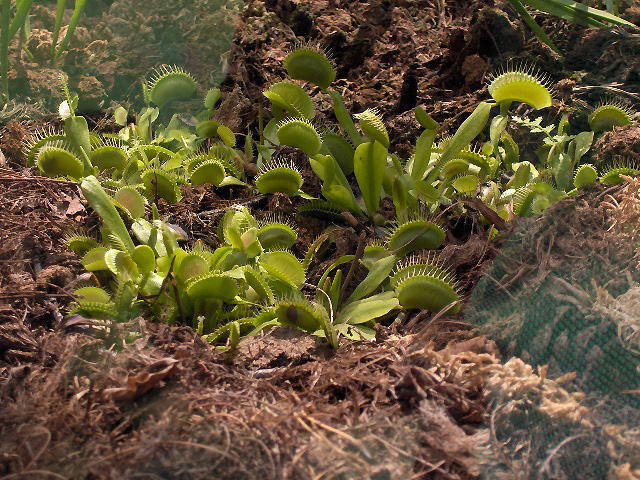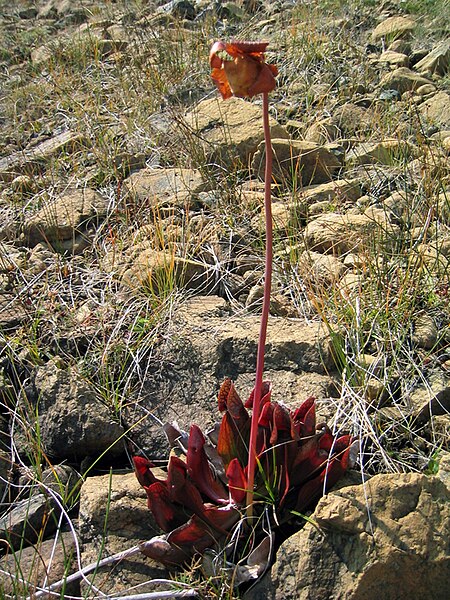I have had the pleasure of cultivating species of three significant families of carnivorous plants: Droseraceae [Sundew & Venus fly-trap family], Sarraceniaceae [Pitcher-plant family], and Nepenthaceae [East Indian Pitcher-plant family].
The members of the family Droseraceae all share the characteristic of actively trapping some prey, usually an insect, either by using sticky droplets or the famous "fly-trap" jaw trap. Once the insect is captured, the leaf releases enzymes to digest the hapless critter. In the case of the Sundew, the leaf actually rolls over the prey.

The Roundleaf Sundew (Drosera rotundifolia).
The Venus fly-trap (Dionaea muscipula) of the Carolinas is the only member of the genus, and is justly famous. It also boasts a delightful and delicate white flower -- my speciman has bloomed the last two years.


Venus fly-trap (Dionaea muscipula)
The Sarraceniaceae include the provincial flower of Newfoundland and Labrador: the Purple Pitcher-plant (Sarracenia purpurea). In this family, the members have modified pitcher-like leaves that grow from the ground. There is no active leaf mechanism here -- the prey are attracted to the rim of the leaf with a sappy substance and simply slip into the broth of rainwater and enzymes where they drown and slowly dissolve. Purple Pitcher-plants also boast a distinctive maroon, down-turned flower. My speciman actually bloomed last year and has been rather easy to grow. They're are an impressive sight in the moors of the Southwest coast of Newfoundland!

Purple Pitcher-plant (Sarracenia purpurea)
Finally, the Nepenthaceae capture prey in much the same way as their American counterparts, but their pitchers actually grow as extentions off the tips of otherwise normal looking leaves. This leaves them looking much like a house-plant decked with peculiar Christmas ornaments! I have had great success growing a species from the Philippines, Nepenthes alata.

Nepenthes alata.
Happy growing!
No comments:
Post a Comment